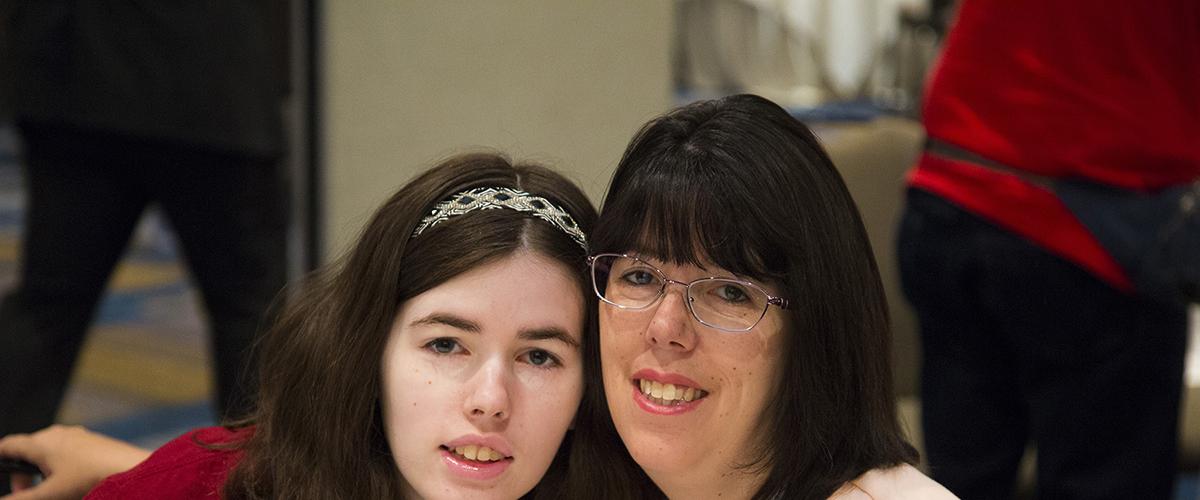In partnership with the Myotonic Dystrophy Foundation US, the Myotonic Dystrophy Foundation UK made the following Research Fellowship grants in 2016:
Ian DeVolder, PhD
University of Iowa, US
In his research proposal titled "Structural and Functional Connectivity in the Brains of Patients with Adult and Late Onset Myotonic Dystrophy Type 1 (DM1): A Potential Biomarker for Disease Progression," Dr. DeVolder seeks to find differences in how the brain looks and functions in DM1. He speculates that these differences can provide a good marker of how much the disease has affected a person and may enable people with DM to be treated before the brain changes happen and prevent them altogether. Dr. DeVolder has two specific aims: 1) Look at the structure and function of the brain in patients with DM1 and 2) See whether changes in the brain are directly related to changes in thinking, behavior, number of repeats in the gene, and how long the person has had the disease.
Melissa M. Dixon, PhD
University of Utah, US
Dr. Dixon’s research proposal, “Evaluation of Functional Connectivity as a Brain Biomarker in Congenital Myotonic Dystrophy”, aims to use specialized pictures of the brains of 20 children with congenital myotonic dystrophy (CDM) to look for brain differences compared to children without CDM, to see how their brain structure may change over time. She will also try to determine if brain differences are related to CDM symptoms such as intellectual disability or behavioral problems. Dr. Dixon hopes that the study may help doctors better understand the CDM brain, and how special MRI images may be used in the future to diagnose CDM or measure how a drug might improve those connections in the brain.
Benjamin Gallais, PhD
Universite de Sherbrooke, Canada
Dr. Gallais, in his research proposal, “A 14‐year Longitudinal Study of Cognition and Central Nervous System Involvement in Adult and Late‐onset Phenotypes of Myotonic Dystrophy Type 1,” will pursue a unique opportunity to continue the largest longitudinal study over the longest period in patients with the adult and late onset phenotypes. The research team has already conducted a study on a very large sample over a 9 year period, with strong results on the progression of intellectual and cognitive abilities. The current project aims to extend the follow-up period and answer such questions as how do symptoms progress over time? Do they progress in similar fashion among all patients? What is the rate of progression? Will cognitive involvement progress to dementia? What assessment tool will best permit to assess change in a clinical trial over time?
Ginny R. Morriss, PhD
Baylor College of Medicine, Houston, Texas, US
In myotonic dystrophy, changes to the levels of two proteins, functional MBNL and CELF1, result in defects in expression and processing of RNA targeted by these proteins. Dr. Morriss’ research proposal, “Mechanisms of Skeletal Muscle Wasting Caused by Expanded CUG Repeat RNA”, is aimed at determining the role the protein CELF1 plays in progression of skeletal muscle wasting in DM by examining the extent to which muscle fiber defects and wasting can be reversed by CELF1 depletion (Aim 1) and to identify additional changes in gene expression and RNA processing and changes to signaling pathways that are important to skeletal muscle wasting (Aim 2). A detailed understanding of causes underlying muscle wasting may potentially aid in development of therapies with the hope of correcting muscle wasting in DM1 patients.
Laura Valentina Renna, PhD
IRCCS-Policlinico San Donato, Italy
Dr. Renna’s research proposal, “A New Approach of Pathomolecular Mechanism in Myotonic Dystrophy Insulin Resistance by Nutrigenomics,” aims to investigate the mechanisms that induce insulin resistance in DM patients and whether these mechanisms may contribute to muscle weakness. The results will lead to the identification of novel biomarkers that could be targets for therapeutic intervention. Dr. Renna will also investigate the ability of natural insulin mimetic compounds that are important component of many foods to modify insulin resistance and muscle atrophy in DM.
Lukasz Sznajder, PhD
University of Florida, Gainesville, Florida, US
Dr. Sznajder, in his proposal “Myotonic Dystrophy Type 2: Mouse Models, Pathomechanism and Therapy”, plans to use recently developed techniques in genetic engineering to generate novel mouse models for DM2. These new mouse models will be thoroughly characterized to determine if they faithfully recapitulate DM2 disease manifestations and allow for the study of the molecular events that underlie DM2 disease progression. These DM2 mouse models will be employed to develop a therapy for DM2 based on drugs called antisense oligonucleotides, which are currently being tested in clinical trials for DM1.

